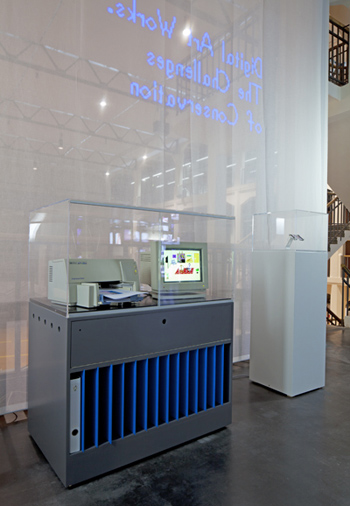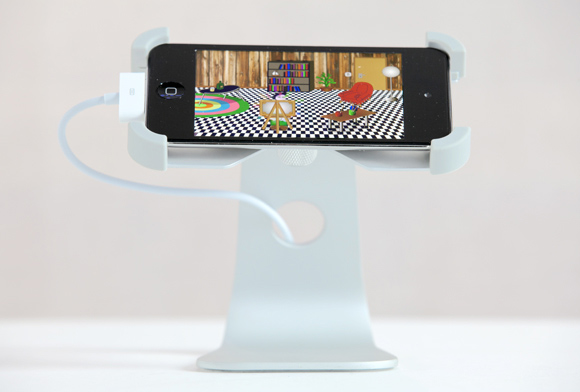| Hervé Graumann |
|
Raoul Pictor cherche son style..., 1993 Coming out of virtual space, the work emerges into the reality of the exhibition space, as the graphic is printed on a color printer. The print is a unique work, created by the program just before printing, selecting at random from a range of possible motifs and colors. After the print command has been sent to the printer, no details of the work are kept on file. Thus the print becomes a unique, one-off creative act, with the color print signed, dated and numbered, before being taken away by the visitor. The Latin signature of the artist playfully invokes the painting of the Renaissance, the epoch which saw the emergence of the modern concept of authorship. The Swiss painter Hervé Graumann studied art in Geneva, where he still teaches today. In conceiving of Raoul Pictor cherche son style …, he was inspired by the technical devices which constitute the work. According to Graumann, the computer shown in this exhibition, which he used to develop the program, seemed the perfect tool to create art in a new way. The figure of a fictional, automatic artist, he feels, is still today a justified one. Almost twenty years since the creation of the figure of Raoul Pictor, the artist has now given it an afterlife by transposing the work to contemporary technology as an iPhone application. The appearance of the original art installation is determined by the original screen technology (a CRT monitor) and by the ink-jet printer, shown in the exhibition in a vitrine specially constructed by the artist. The desktop computer remains concealed during the presentation of the work. A technical breakdown leading to the replacement of the screen and printer by more modern models would endanger the authenticity of the installation’s appearance. To minimize this risk, for this case study, the conservatorial strategy known as “hardware preservation” (see the Glossary) was chosen. Although the computer, monitor and printer are no longer manufactured, they used to be very popular consumer items and are still available on the second-hand market, where they could be purchased by the FRAC Alsace collection in the future. It should however be noted that these technical components have only a limited life expectancy. As well as purchasing and storing replacement hardware devices, it was necessary to back up the hard-drive in order to limit the risk of data damage. For this, a redundant backup strategy is highly recommended (see the Glossary). Alongside the efforts of FRAC Alsace to preserve the work, the artist took some measures of his own to preserve the work’s concept. Originally Graumann created the work using the authoring system Macromedia Director. In 2006, he created a web application using the programming language ActionScript, and three years later, an app version appeared for iPhone. For this version, the author engaged the services of an outside programmer. These conservation strategies constitute a reinterpretation (see the Glossary): the concept of the work is realized by means of different technologies. One advantage of this strategy is that hardware-related preservation problems can be avoided. However, this strategy frequently entails losses in the work’s authentic functionality and appearance. |




